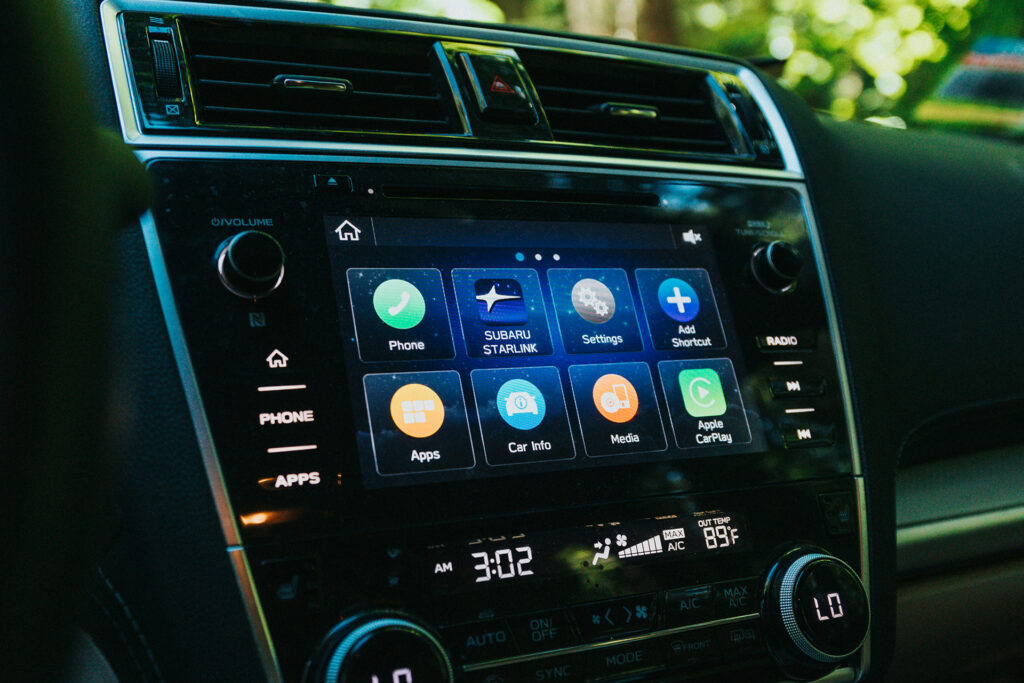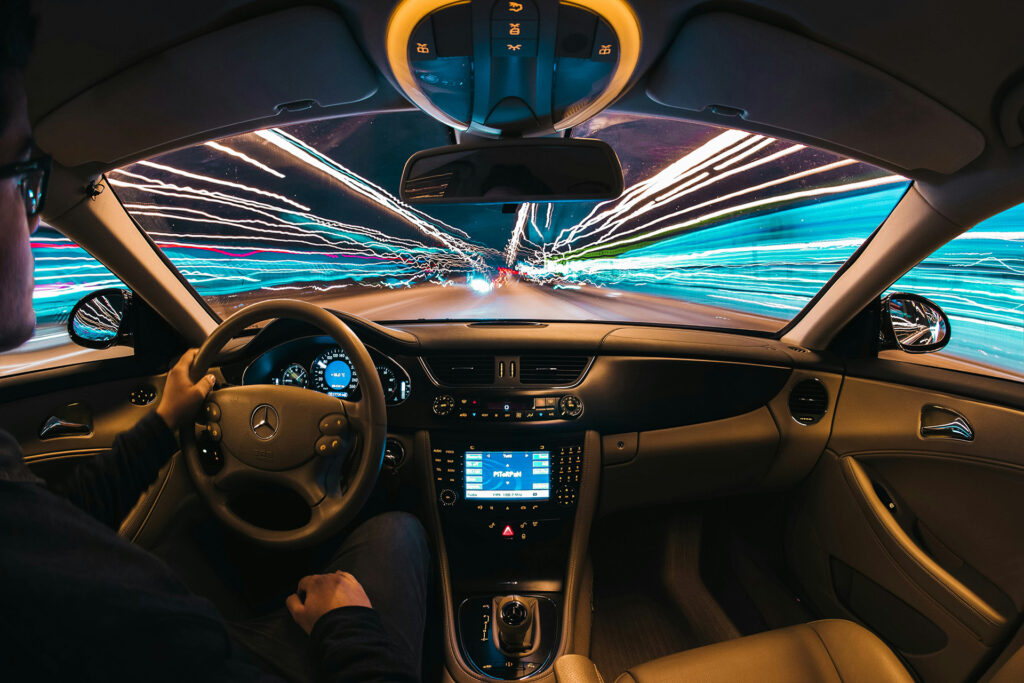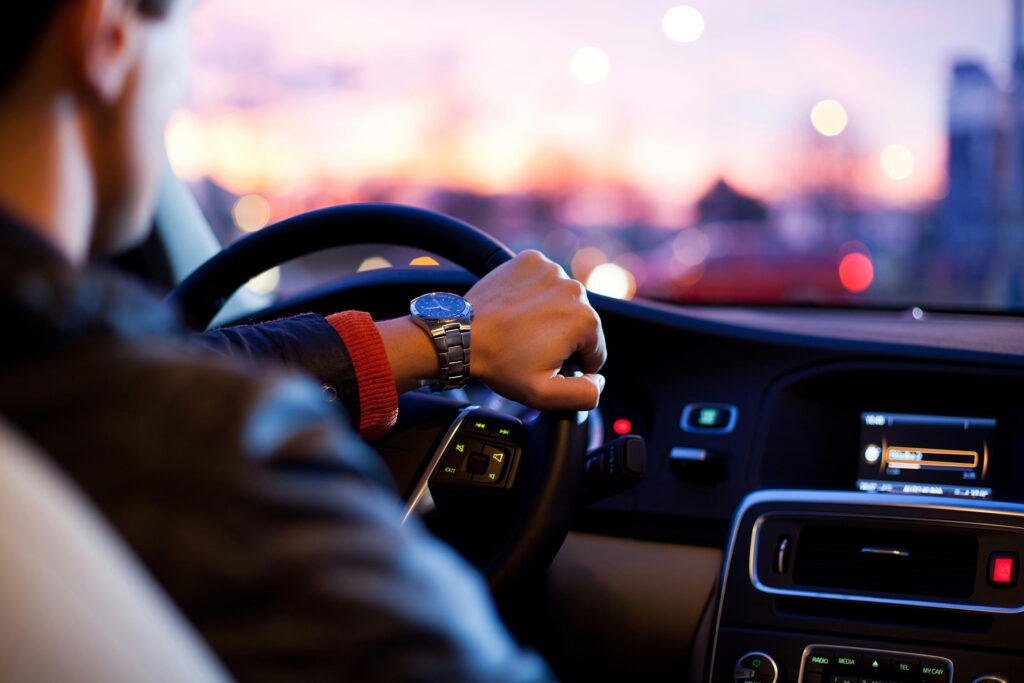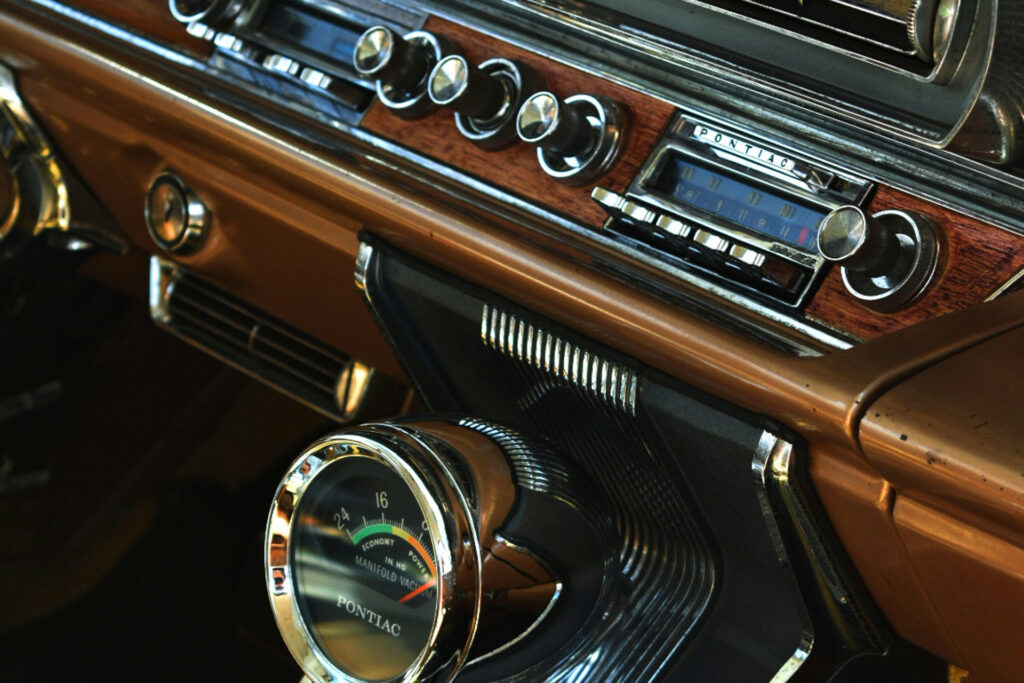For audiophiles, driving with music blasting from the speakers in our car audio system is a ritual that makes long commutes bearable and road trips legendary. Installed premium car audio systems have evolved significantly over the years, with upgraded components now offering vastly upgraded clarity, powerful bass, and an immersive soundstage much more reminiscent of the high-end brand name audio systems that automotive companies spend millions in licensing. Even today’s factory-installed sound systems found in budget-friendly vehicles far surpass the capabilities of those from just a decade or two ago, offering drivers a richer and more dynamic listening experience straight off the lot. There has never been a better time to listen to music in your car than right now.
Experiencing mobile auditory nirvana is great and all, but it comes with inherent risks. Loud music (or any kind of sound) can impact both hearing health and driving safety, making it essential for audiophiles to understand the potential dangers and consider making some adjustments when behind the wheel. The science behind sound amplification in cars, the effects of prolonged exposure to high volumes, and the latest safety measures available to consumers all play a role in protecting your ears – and yourself – on the road. Those familiar with me as a writer and reviewer know that I’m a healthcare professional on a mission to save audiophile ears, one stereocilia at a time (more on that later). If you want to preserve your hearing and minimize the risks associated with loud audio while driving, there are several key factors to consider. Let’s dive in.

The Dangers of Loud Music in Cars
Simply put, listening to loud music in your car, especially over a long period, can lead to permanent hearing damage. According to the World Health Organization, exposure to sound levels above 85 decibels (dB) for extended periods can cause hearing loss. Car audio systems can easily exceed this threshold, especially with aftermarket modifications that boost power and volume. Consider this: what’s the first thing a 16-year-old does when they get behind the wheel for the first time, with a car full of friends and no specific destination? That’s right – crank up the volume and drive off into the sunset. Sounds idyllic, but extrapolate that habit over decades of driving, and the cumulative impact on hearing becomes a real concern without a little mindfulness about how sound over time can impact your hearing. For audiophiles, this lifelong bad habit could ultimately lead to the demise of our cherished hearing.
In a car, the risk of hearing loss is heightened because drivers are often unaware of just how loud their music is. The enclosed pressurized environment, road noise, and close proximity to the actual speakers can mask the true volume level at any given time – more so than in a larger listening space. Prolonged exposure to high-decibel music while driving can cause symptoms such as tinnitus (see my article on tinnitus here) and irreversible hearing loss, but it doesn’t necessarily happen overnight. Listening to loud music over time can slowly deteriorate the stereocilia (the small, hair-like cells responsible for transforming kinetic energy into electrical energy – aka the process of hearing), resulting in a slow, gradual death of your your most prized audiophile component: your ears.
Beyond the risk of hearing damage, blasting music while driving can significantly reduce situational awareness, making the road a lot more dangerous. Emergency vehicle sirens, honking horns, or even your own car’s warning signals can easily be drowned out by loud music inside your car, thus delaying reaction times and increasing the likelihood of an accident. When the volume is cranked up, it’s not just your safety on the line, but also that of passengers, pedestrians, and fellow drivers. Enjoying music on the road is one thing, but responsible listening ensures that you remain aware of your surroundings while still getting the most out of your car’s audio system.

How Sound is Amplified in Cars
A car’s physically compact interior creates a unique acoustic environment, where sound behaves quite differently than it would in an open space. This is due to a combination of reflection, compression, and resonance, all of which affect how audio waves interact within the cabin. From Bentley to Kia, every modern car includes some level of sound dampening. While this is great for reducing external noise and creating a solid mobile listening space, it can also have unintended effects on the listener, such as altering sound clarity or creating unwanted resonances.
When sound waves bounce off hard surfaces such as windows, dashboards, and seats, they create an echo effect that amplifies the overall volume. This effect is compounded by the sealed nature of the cabin, which traps sound waves and prevents them from dissipating. As a result, even moderate sound levels can feel much louder inside a vehicle.
Further, bass frequencies are particularly amplified in cars due to resonance. Subwoofers positioned in the trunk or under seats can cause vibrations that intensify low-frequency information. While this enhances the listening experience, it can also contribute to hearing damage if the volume is set too high and/or for too long.

Testing Loudness/SPL Levels in a Car
To understand how loud your car audio system is, it’s essential to measure the sound pressure level (SPL). SPL is measured in decibels and indicates the intensity, or loudness, of sound.
Here’s how you can test SPL levels in your car:
- Use an SPL Meter: Devices like handheld decibel meters are accurate and affordable tools for measuring sound levels. A decent SPL meter, like the one I use for reviews, can be purchased for under $30. This is a great budget-friendly investment for any audiophile who is taking hearing protection seriously, as it can be used to measure the amplitude of any sound source. Simply place the meter at the driver’s or listener’s ear level while playing music at your typical listening volume to determine the exact amplitude level, and adjust your settings accordingly.
- Smartphone SPL Apps: While not as accurate as dedicated meters, apps like Decibel X and NIOSH Sound Level Meter can give you a general idea of your car’s audio levels. You might be surprised just how loud even a “normal” listening level can be. Anything that increases awareness of potential sound damage is a good thing in my book, so try a few different apps before settling on the one you like the most.
- Professional Testing: Car audio installation specialists can take precise measurements to help optimize your system for safer listening while enhancing sound quality. They can also assist with soundproofing and digital signal processing (DSP) calibration, ensuring you get dynamic, clear sound without the need to blast the volume beyond safe levels. Currently, I’m working with a local installer here in the Chicago suburbs to put a Focal system in my vehicle, and you’d better believe we’ll be measuring every nook and cranny of my Hyundai trucklet to get the absolute best performance out of it. Stay tuned on that project.
When testing your car’s audio system, keep in mind that peak amplitude levels during bass-heavy songs, or even songs with wide dynamic range, can briefly exceed recommended limits. Continuous exposure to high decibel levels is more concerning than occasional spikes (called high impulse sounds in my line of work), but repeated exposure to these can also be problematic. The most common culprit with accelerated hearing loss, as mentioned earlier, is prolonged exposure over time. Finding the balance between optimal volume and maximized safety is certainly a subjective and personal journey that all audiophiles should take – both in the car and at home. Finding that sweet spot lets you enjoy powerful, high-fidelity sound while protecting your hearing health. By taking these precautions, you’ll not only preserve your ears but also extend the enjoyment of our beloved hobby for both you and your passengers for years to come.
Safe Volume Levels for Car Audio
Maintaining safe volume levels is crucial, not only for protecting your hearing but also for ensuring driver awareness and road safety. According to a study by the National Highway Traffic Safety Administration (NHTSA), in-vehicle distractions – such as loud music – contribute to roughly 25 percent of traffic accidents. To put things into perspective, normal conversation hovers around 60 decibels (dB), while the noise of heavy city traffic ranges from approximately 70-85 dB. When music volume exceeds these levels, critical sounds like sirens, horns, and other road cues can be drowned out, increasing the risk of collisions. Simply turning the volume down, even situationally, helps create a safer driving environment for both you and those around you. It’s also an opportunity to give your precious ears a break.
To gauge whether your music is too loud, consider these guidelines:
- Conversational Test: If you cannot carry on a conversation with a passenger without raising your voice, your music is likely too loud.
- Ear Discomfort: Any level of music that causes ear discomfort or ringing is unsafe.
- Gradual Adjustment: If you find yourself gradually increasing the volume over time, it may indicate that your ears are adapting to higher levels, which is a red flag for potential hearing damage.
- Social Cues: If your passengers (or the old couple that pulls up next to you at the stoplight) are giving you dirty looks, it’s time to turn it down. Don’t be that guy (or girl). I may or may not be speaking from experience. Hey – we were all young once, right?

Modern Safety Features in Automobiles
Automakers have recognized the importance of auditory safety and are incorporating advanced features to protect drivers’ hearing and enhance overall safety.
- Volume-Limiting Features: Some car audio systems now come with built-in volume limiters that warn drivers or automatically adjust the volume to safe levels. These features can help prevent accidental exposure to dangerous decibel levels.
- Noise-Canceling Technology: Active noise cancellation (ANC) technology uses built-in microphones, headphones and loudspeakers to detect and neutralize unwanted external noise, such as road and wind noise. By creating a quieter cabin environment, ANC allows drivers to enjoy their music at lower volumes without sacrificing clarity. Once a luxury feature found only in high-end vehicles, ANC is now widely available across various brands, makes, and models. This technology is becoming even more relevant with the rise of electric vehicles (EVs), which operate significantly more quietly than their combustion-engine counterparts. While EVs are legally required to produce at least 56 decibels for pedestrian safety, their overall cabin noise remains much lower, making ANC an increasingly valuable feature for both comfort and audio quality.
- Hearing Protection Alerts: Certain modern vehicles provide alerts if audio levels exceed recommended thresholds. These alerts encourage drivers to reduce the volume to safer levels.
- Driver Assistance Systems: Advanced Driver Assistance Systems (ADAS), like blind-spot monitoring, forward collision warnings, sonar, and lane departure alerts, often rely on audible signals to alert drivers to potential hazards. Many vehicles will also reduce or mute volume when these alerts are triggered. My 2023 Hyundai Santa Cruz compact truck has a unique feature where the volume automatically decreases by about half when the vehicle is in reverse. At first, I found it a bit annoying, especially when listening to a podcast, but over time, it’s become incredibly useful, especially in busy parking lots, and even when backing out of my own driveway.
- Bluetooth and Hands-Free Integration: Hands-free integration enables drivers to make calls and use voice commands without ever needing to take their hands off the wheel. Not only does this enhance convenience and safety, but it also reduces the temptation to crank up the volume just to hear conversations over road noise. Many modern vehicles now come equipped with smart assistants like Siri, Alexa, or Google Assistant, allowing drivers to simply ask for the volume to be adjusted to a comfortable level. It’s a seamless way to stay connected while keeping your focus on the road – pretty cool stuff.
Some Final Thoughts for Audiophiles Listening to Music in the Car …
Car audio systems provide an enjoyable and immersive listening experience, but they also come with plenty of risks that are rarely discussed in the establishment audiophile media. Understanding the dangers of excessively loud music, how sound behaves in a car, and ways to measure and maintain safe audio levels, is essential for protecting your hearing and staying safe on the road. With advancements in automotive technology, modern vehicles now offer features designed to enhance auditory safety, ensuring that drivers can enjoy their music responsibly and without compromising their hearing, and well-being at large.
Fellow audiophiles, you don’t want to be forced into early retirement from the hobby by doing something avoidable. Few (if any) car audio systems can perform like a home stereo system. Doesn’t it make sense to save your hearing for the best-performing, most goosebump-inducing system? I am suggesting that you put just a little bit of car audio awareness to protect your ears now, in all listening environments, so you can continue enjoying music, where it sounds best, for decades to come. Consider this your friendly warning from your neighborhood speech and hearing professional who cares about your safety – and your hearing.
Do you ever think to turn down your car audio system from time to time when you are out and about? This is a good idea too when on an airplane or at the gym with headphones on? Did you ever (or do you now) have a bad ass car audio system? Some can play as loudly as a Gulfstream GIV taking off. We’d love to hear your stories on how you balance car audio with being an audiophile at home.




I have many friends who thought louder was better and now they all have severe tinnitus or permanent hearing loss. My goal was and is a clean reliable car system that will get me home. It also must allow my passengers and me to sing and play air guitar if we want lol!
This is a good article and important. I was shocked at the db level that I measured while driving and listening to music at a decent level in an ICE German sedan. Even with no music you are going to be getting 60-70 db just driving down the road and then music on top of that easily pushed it to the 90db range. I have an EV now and that definitely helps with not having to turn the music up as much to hear it well. I now try to listen and lower levels and then turn it up only on a couple of favorite or good sounding tunes each day on my commute.